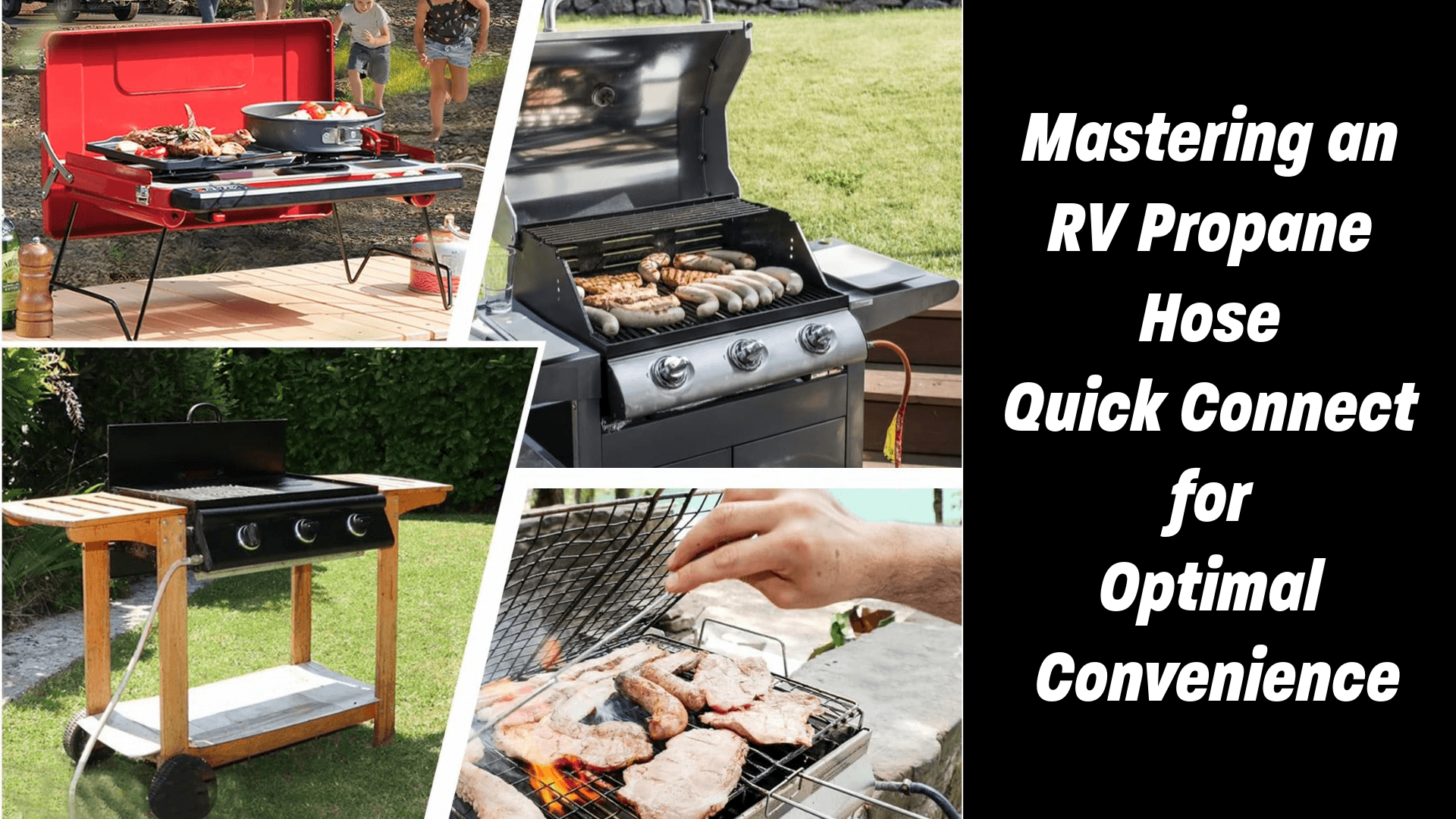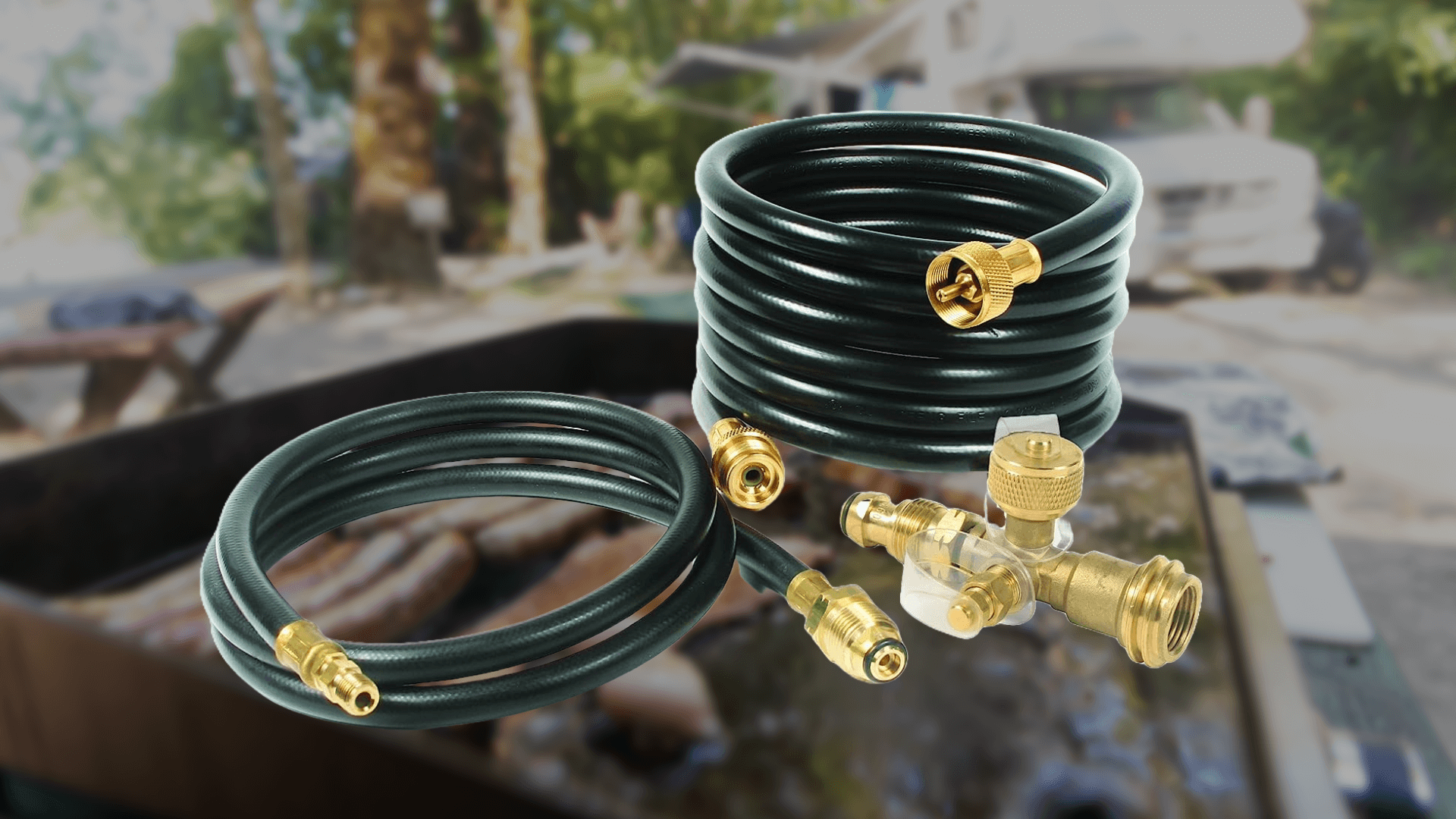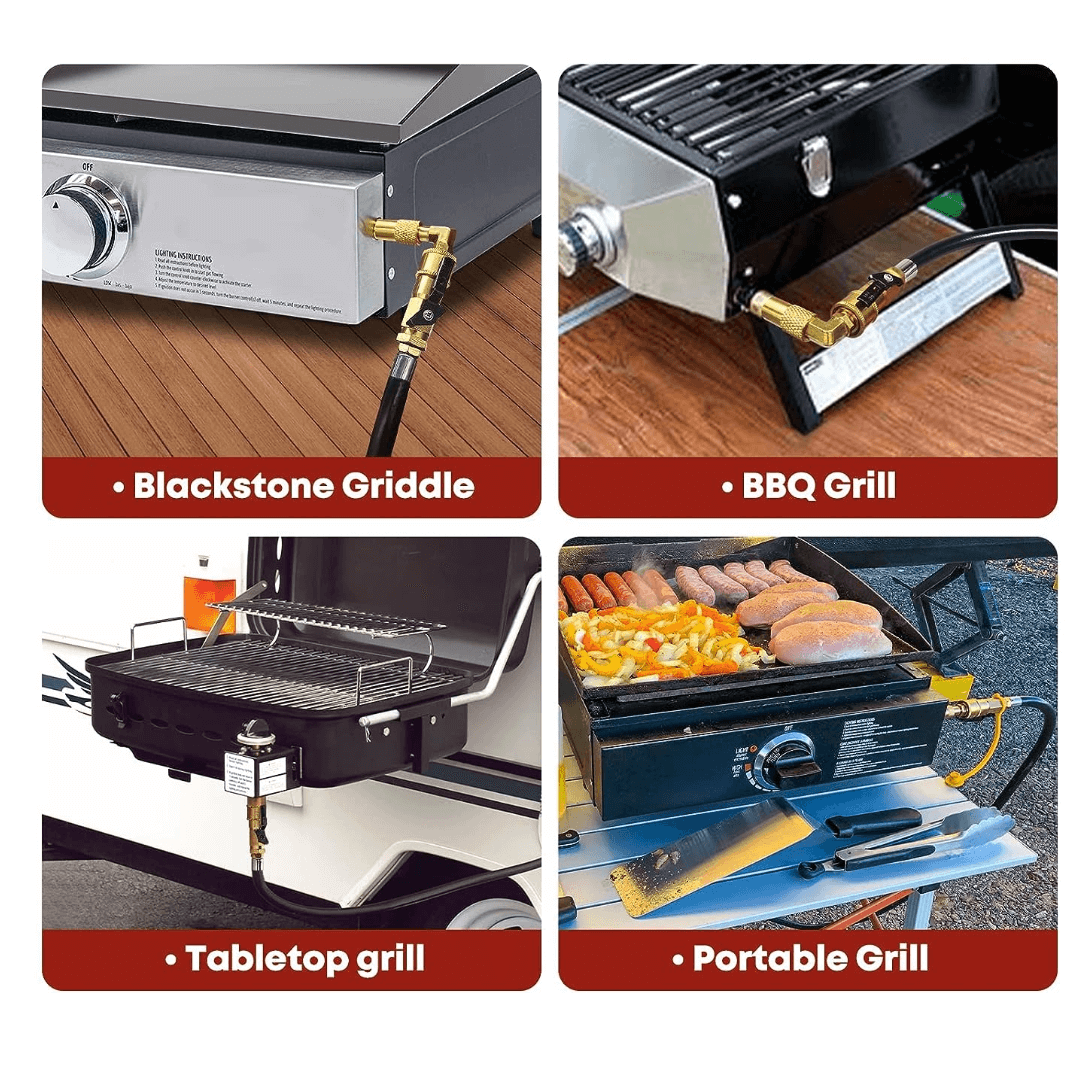- Home Page
- Favorite RV Accessories
- RV Propane Hose Quick Connect
Mastering an RV Propane Hose Quick Connect for Optimal Convenience
Pictured Above: Propane Appliances using RUBY.Q 14 piece Propane Quick Connect Fittings Kit
In the realm of recreational vehicles (RVs), one cannot underestimate the importance of propane. It's the lifeblood of your home on wheels, powering everything from your stove and refrigerator to your water heater and furnace. And when it comes to propane connections, the RV propane hose quick connect is a game-changer that promises optimal convenience and efficiency. In this comprehensive guide, we'll delve deep into the world of RV propane hose quick connects, exploring their benefits, installation, maintenance, and safety tips to ensure you have all the knowledge you need to make the most of this essential RV component.
Understanding the RV Propane Hose Quick Connect
Pictured Above: Camco RV Propane Hose Quick Connect Kit
The Heart of Convenience
The RV propane hose quick connect is a crucial component that allows you to easily connect external propane appliances to your RV's onboard propane system. Gone are the days of cumbersome propane tanks and manual connections; the RV quick-connect system streamlines the process, making it more efficient and safer.
Benefits Galore
1. Streamlined Cooking
Pictured Above: PatioGem 12 FT RV Quick Connect Propane Hose for RV to Grill
One of
the primary advantages of an RV propane hose quick connect is the convenience
it offers when cooking on the road. Whether you're whipping up a gourmet meal
or simply heating a quick snack, having a propane quick connect means you can
use an external propane grill, stove or griddle without the hassle of swapping out
propane tanks.
2. Extended Stay
If you're planning an extended stay in your RV, the quick connect system is a lifesaver. You won't need to worry about running out of propane during the middle of your camping trip. With a quick connect, you can easily connect your RV to larger propane tanks or even your home's propane supply for uninterrupted comfort.
3. Eco-Friendly Option
In today's environmentally conscious world, reducing waste is a top priority. RV propane hose quick connects help in this regard by eliminating the need for disposable propane canisters. You will reduce your carbon footprint and save money in the long run.
Installation Made Easy
Pictured above: Camco RV Propane Hose Quick Connect Kit Instructions
Step 1: Gather Your Tools
Installing an RV propane hose quick connect may seem daunting, but it's a straightforward process with the proper guidance. Here's the step-by-step guide to get you started:
Before you begin, ensure you have the necessary tools and materials, including a wrench, Teflon tape, and your quick connect kit.
Step 2: Locate the Propane Line
Identify the propane line on your RV where you want to install the quick connect. Ensure the propane system is turned off before proceeding.
Step 3: Attach the Quick Connect Fitting
Apply Teflon tape to the threads of the quick connect fitting to create a secure seal. Then, use a wrench to attach the fitting to the propane line.
Step 4: Connect the Hose
With the quick connect fitting securely in place, you can now attach the hose that leads to your external propane appliance.
Step 5: Test for Leaks
Turn on the propane system and use a soap and water solution to check for any propane leaks around the connection points. If you see bubbles forming, tighten the connections until the leaks stop.
Maintaining Your RV Propane Hose Quick Connect
Proper maintenance is required to ensure the longevity and safety of your RV propane hose quick-connect system. Here are some essential maintenance tips:
Regular Inspections
Periodically inspect all connections and hoses for wear and tear. Look for any signs of corrosion or damage and replace components as needed.
Lubrication
Apply silicone-based lubricant to the quick connect's o-rings to prevent them from drying out and cracking.
Cleaning
Keep the quick connect and hoses clean from dirt and debris, as contaminants can affect the integrity of the connections.
Safety First
While RV propane hose quick connects offer convenience, safety should always be a top priority. Here are some safety tips to keep in mind:
1. Check for Propane Leaks
Regularly
inspect your quick connect system for gas leaks by using the soap and water
solution test mentioned earlier. Address any leaks immediately.
2. Turn Off Appliances
Always turn off external propane appliances and close their valves when not in use. This prevents gas from leaking into your RV.
3. Secure Connections
Ensure all connections are properly secured before using any propane-powered devices. Loose connections can lead to leaks and potential hazards.
4. Follow the Manufacturer's Instructions
Pictured above: Camco RV Propane Hose Quick Connect Kit Instructions
Always
adhere to the manufacturer's guidelines for your specific RV propane hose
quick-connect system. They provide essential information on installation,
maintenance, and safety.
In conclusion, mastering the RV propane hose quick connect can significantly enhance your RVing experience. The benefits are abundant, from streamlined cooking to extended stays and eco-friendly choices. By understanding installation, performing regular maintenance, and prioritizing safety, you'll optimize convenience and ensure the safety of your RV and its occupants.
So, whether you're a seasoned RVer or just starting your journey, embrace the world of RV propane hose quick connects for a more comfortable and enjoyable adventure on the road.
FAQ
What
is an RV propane hose quick connect?
What
is an RV propane hose quick connect?
An RV propane hose quick connect is a crucial component that allows you to easily connect external propane appliances to your RV's onboard propane system, offering convenience and safety.
What are
the benefits of using an RV propane hose quick connect?
What are the benefits of using an RV propane hose quick connect?
The benefits include streamlined cooking with external grills or stoves, extended stays without worrying about propane running out, and eco-friendliness by reducing the need for disposable propane canisters.
How do I
install an RV propane hose quick connect?
How do I install an RV propane hose quick connect?
Follow these steps:
Step 1: Gather the necessary tools and materials.
Step 2: Locate the propane line on your RV and turn off the propane system.
Step 3: Attach the quick connect fitting with Teflon tape and a wrench.
Step 4: Connect the hose leading to your external propane appliance.
Step 5: Test for leaks using a soap and water solution.
What
maintenance is required for an RV propane hose quick connect?
What
maintenance is required for an RV propane hose quick connect?
Maintenance involves regular inspections for wear, lubricating O-rings with silicone-based lubricant, and keeping connections clean from dirt and debris.
What
safety steps should I take when using an RV propane hose quick connect?
What
safety steps should I take when using an RV propane hose quick connect?
Safety tips include checking for gas leaks regularly, turning off appliances when not in use, ensuring secure connections, and following the manufacturer's instructions for installation, maintenance, and safety.







